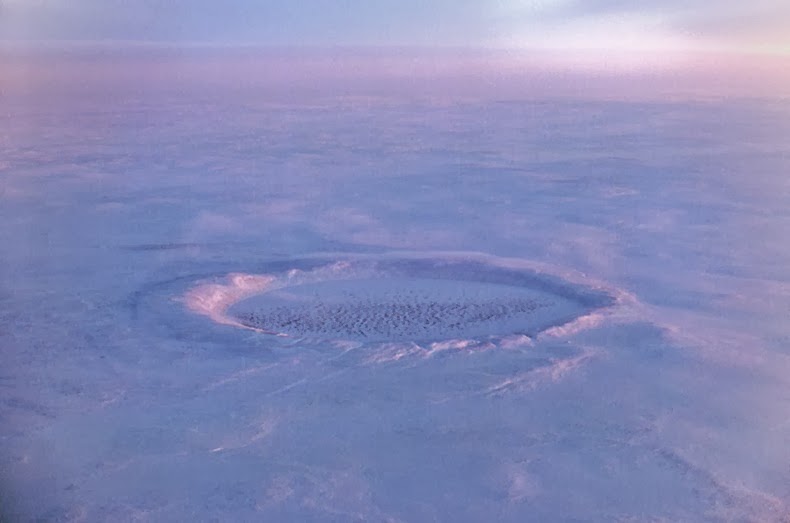When Ontario diamond prospector Frederick W. Chubb saw the photographs, he became interested in it. He hoped that this might be an extinct volcano and there was a possibility to find diamonds nearby. Chubb sought the opinion of geologist V. Ben Meen of the Royal Ontario Museum, who immediately saw the possibility of an impact crater. Meen organized an expedition to this remote area together with Chubb. It was on this trip that Meen proposed the name "Chubb Crater". Meen organized two more expeditions to the crater, and from the data collected from the site, concluded that the structure was a meteorite crater produced from an impact roughly 1.4 million years ago.

The name of the lake was later changed to "New Quebec Crater" at the request of the Quebec Geographic Board. In 1999, the name was again changed, to "Pingualuit". The crater and the surrounding area are now part of Pingualuit National Park.
Pingualuit crater is 3.44 km in diameter. The crater rises 160 meters above the surrounding tundra and is 400 meters deep. A 267 meters deep body of water fills the depression, forming one of the deepest lakes in North America. The lake also holds some of the purest fresh water in the world, with a salinity level of less than 3 ppm. The lake has no inlets or apparent outlets, so the water accumulates solely from rain and snow and is only lost through evaporation. It is also one of most transparent lakes in the world with visibilities up to 35 meters.




Source
